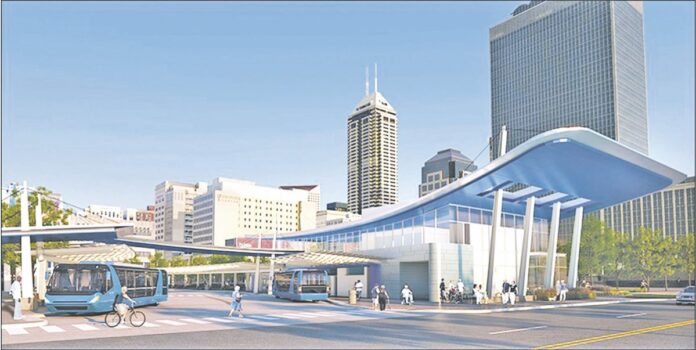HARLINGEN — On about two acres, a $5 million transit center would feature a terminal with bays for buses serving the area.
Last year, city commissioners ranked the project as No. 13 of 17 priorities in their new 10-year comprehensive plan.
Then this week, they requested City Manager Dan Serna and his staff review funding sources and possible sites to determine whether to go ahead with the project.
First, the city has to come up with about $1 million, Assistant City Manager Gabriel Gonzalez said yesterday.
Gonzalez said the Harlingen-San Benito Metropolitan Transportation Organization has earmarked $3.6 million in grant money to build the center.
But time might be ticking away for some of the money.
As part of that grant’s requirements, $1.2 million must be used by September 2018 or that money could be lost, said Tom Logan, director of Valley Metro, operated by the Lower Rio Grande Valley Development Council.
“That’s why we’re trying to be creative and look at avenues to use the money,” Logan said.
Logan said the agency could earmark that money to other projects while pushing back the proposed transit center project to open it up to future funding.
The city also could request an extension on the money’s use, Gonzalez said.
Gonzalez said the MPO grant requires the city provide $1 million in matching money.
“We’re looking at everything,” Gonzalez said of possible funding sources.
Gonzalez said it might take two years to collect all the money.
“Whatever source we identify, it might have to be over a two-year period,” he said. “Coming up with $1 million — it’s a lot of money.”
The city plans to form a committee or hire a consultant to select a prospective site, Gonzalez said.
Gonzalez said the city’s looking for about two acres for the site on which to build the terminal, bus bays and parking area.
“It should be a location with access to a thoroughfare or adjacent to a large collector street, somewhere where people can have easy access,” he said. “That would provide sufficient parking for people and the buses.”
As the city plans for its $14.8 million convention center, a transit center could play a role building its success.
Gonzalez said the transit center could help draw conventions to town.
“This is only going to be a plus for that,” he said. “Conventions look at whether you have a transit system. Any convention coming into town wants to know there’s a public transportation system to tour your city and parts of the Valley.”
As part of its plan, the city would rent out space in the terminal to fund the center’s operating costs, which would be the city’s responsibility, Gonzalez said.
“Right now, the idea is to cover all your expenses,” he said. “If it generates (profit), you hold that for future expansion or repairs.”
Gonzalez said the city plans to rent to bus companies and businesses such as fast-food restaurants and retail shops.
In Brownsville and McAllen, restaurants and retail businesses have opened in and around transit centers there, he said.
“There are businesses in there, kind of like an airport,” Commissioner Tudor Uhlhorn said at a meeting Wednesday.
Inside the terminal, customers could buy tickets to board buses operated by such companies as Valley Metro, Valley Transit Co. and Greyhound.
Some companies such as Adame, Tornado and El Expreso might offer service into Mexico.
Logan said the transit center could draw other bus companies to the area.
“That type of building could entice other providers to come into the area to provide transit services,” Logan said.
For Valley Metro, the transit center could also lead to expanded service, Logan said.
“It would be our hub in the Harlingen urbanized area,” Logan said. “With a terminal like that, we’d see the potential of growth.”
Mayor Chris Boswell said Harlingen area’s ridership numbers have outpaced those in Brownsville.
Now, Valley Metro offers seven buses in the Harlingen area, where the city’s medical complex and Texas State Technical College draw large numbers of riders, Logan said.
“There’s a lot of need and a lot of usage,” Boswell said at Wednesday’s meeting. “The ridership is getting off the chart.”
In February, Harlingen served as a hub for about 26,453 riders, said Joel Garza, director of the Harlingen-San Benito Metropolitan Transportation Organization.




